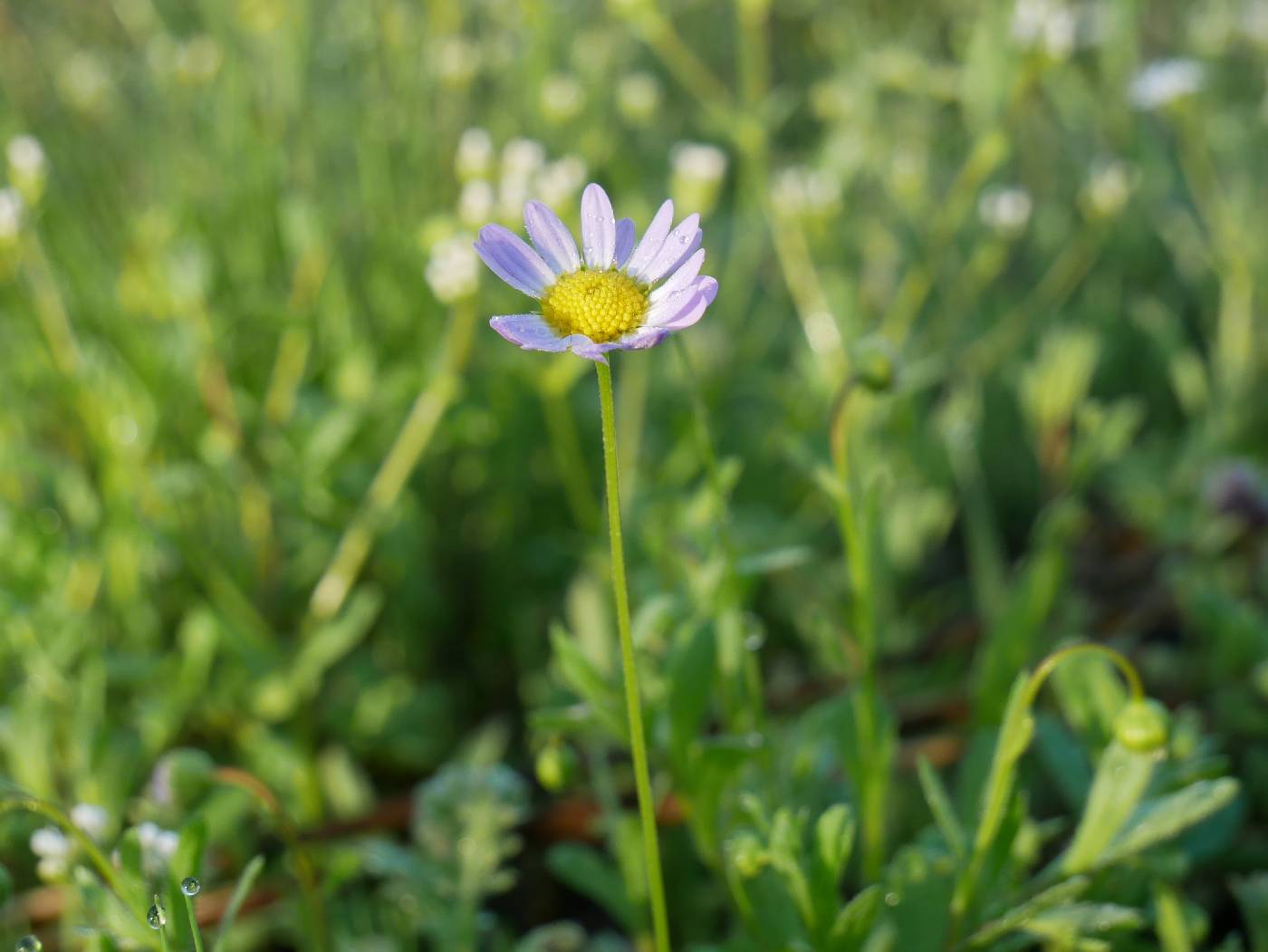Astranthium
|
Family: Asteraceae |
Annuals, biennials, or perennials, 5-50 cm (with taproots or fibrous roots). Stems erect to decumbent, usually branched throughout, sparsely to densely strigose to hirsuto-pilose. Leaves basal and cauline; alternate; mostly petiolate; blades 1-nerved, spatulate-obovate (proximal) or narrower, 1-8(-12) cm (some clasping to subclasping), margins usually entire, sometimes toothed, faces glabrous or strigose. Heads radiate, borne singly (usually on long, leafless or bracteate peduncles). Involucres campanulate or hemispheric, (3.5-8 ×) 4-8 mm. Phyllaries 15-30 in 2(-3) series, appressed, midnerves inconspicuous, broadly oblanceolate to linear-lanceolate, subequal, thin-herbaceous, margins often hyaline, faces glabrous or strigose. Receptacles conic, pitted, epaleate. Ray florets 10-65(-85), pistillate, fertile; corollas abaxially drying white or with blue to purplish blue midstripe, adaxially white. Disc florets 25-200[-250], bisexual, fertile; corollas yellow, tubes much shorter than tubular-funnelform throats, lobes 5, spreading, deltate; style-branch appendages lanceolate-acute. Cypselae (brownish) obovoid to oblanceoloid-obovoid, compressed, 2-nerved (nerves marginal, usually thin, sometimes thick), faces smooth, striate, or papillate-pebbly, and glabrous or glochidiate-hairy; pappi 0 or coroniform (of setae or scales to 0.1 mm). x = 3, 4, 5. Astranthium is characterized by its herbaceous habit, heads borne singly on long peduncles, subequal phyllaries in 2-3 series, conic receptacles, white or blue rays, tubular disc corollas, and flattened, papillate cypselae with coroniform or no pappi. Apically glochidiate cypsela hairs have each apical cell abruptly reflexed in opposite directions. The species are separated by small but consistent morphologic differences, often accompanied by differences in chromosome number. All but three of the species are known only from Mexico (D. C. D. De Jong 1965; J. Rzedowski 1983). Vegetatively and florally, Astranthium is similar to the monotypic Dichaetophora, which has the same chromosome number (2n = 6) as northern species of Astranthium. Epappose species of Erigeron may be superficially similar to Astranthium (D. C. D. De Jong and G. L. Nesom 1982); they are distantly related.
Heads solitary or several, radiate, mostly long- pedunculate; invol bracts slightly imbricate, green, with membranous or scarious margins; receptacle strongly convex, cushion-like, naked; rays pistillate and fertile, white or anthocyanic; disk-fls perfect, yellow; style-appendages ovate to lance-ovate; achenes ±obovate, compressed, mostly 2-nerved; pappus obsolete; caulescent herbs with alternate lvs. 10, Mex. and s. U.S. Gleason, Henry A. & Cronquist, Arthur J. 1991. Manual of vascular plants of northeastern United States and adjacent Canada. lxxv + 910 pp. ©The New York Botanical Garden. All rights reserved. Used by permission. |

